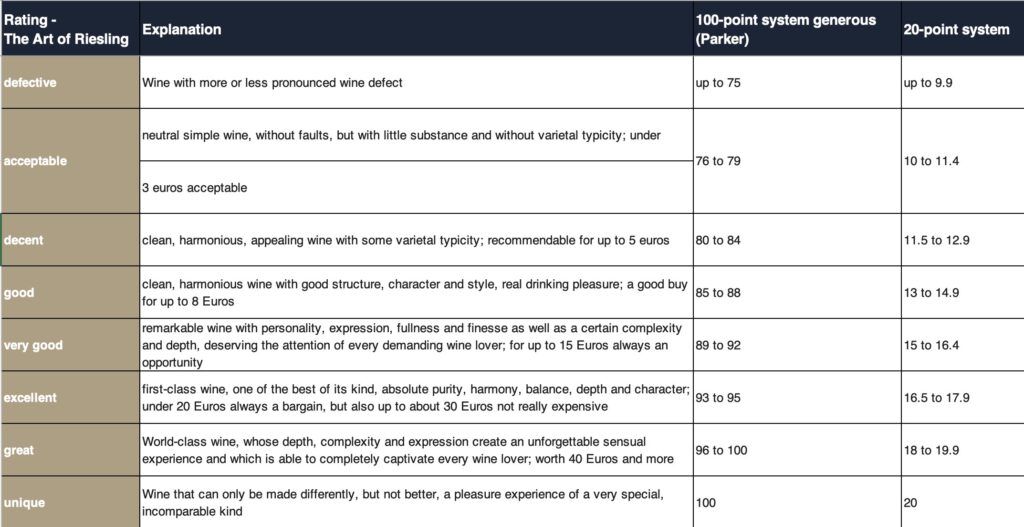
Beyond Points:
Ever since Robert Parker began rating wines on a 0-100 point scale in his Wine Advocate magazine, the wine world has increasingly leaned towards a purely numeric assessment of wines. The mantra seems to be “the more points, the better.” Unfortunately, this trend has led to a diminishing emphasis on textual descriptions. This is regrettable because a simple numerical score tells you little about the actual taste of a wine — whether it’s dry or sweet, austere or fruity, earthy or creamy, elegant or opulent, and so much more. Moreover, understanding the reviewer’s palate is essential, as achieving 100% objectivity in wine evaluation is practically impossible.
Unlike numerical scores, descriptions have the power to take the reader on a journey into a world filled with complex aromas and nuanced flavors. It’s precisely this type of journey that I aim to share with my discerning readers. To ensure that my descriptions and impressions can still be placed in a somewhat comparable context, I’m placing wines into eight categories at the end of my descriptions. The following table provides an overview and parameters for both the 100 and 20-point rating systems:
Max Kaindl, 18. August 2023
Reading time about 3 minutes


